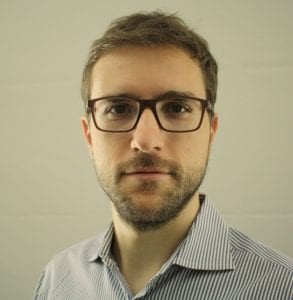
ABSTRACT: Photothermal effects refer to the physical phenomena at the base of electromagnetic energy conversion into heat. Nanostructures store energy differently upon interaction with radiation, depending on the considered time scale, system size, and interacting components. Properly designed nanostructured surfaces confine electromagnetic energy, making it available as high energy electrons and confined fields, far-field scattered radiation, heat or thermal radiation. The mechanisms ruling the light-heat conversion process in nanostructures and their interplay with surrounding components are crucial aspects at the base of a broad range of applications, from ultrafast optical manipulation to compact solar-driven desalination systems.
The seminar is divided into two main sections. In the first part, I will discuss how electromagnetic radiation is absorbed inhomogeneously in differently shaped nanostructures. In particular, I will show how this phenomenon leads to a space-dependent out-of-equilibrium hot carrier population that breaks the optical symmetry of otherwise symmetrical nanostructures. The resulting asymmetric hot-carrier time dynamics can be exploited to manipulate light-matter interaction in the ultrafast regime (<1 ps). Electron-phonon scattering eventually induces heating, and I will show how properly designed large scale ultrathin (~250nm) metasurfaces allow extremely large (~GW/m3) and broadband (~90% of solar spectrum) dissipated power densities. In the second part, I will focus on one large-scale application of photothermal effects: solar desalination. A few years ago, we introduced the concept of nanophotonics-enabled solar membrane distillation (NESMD), where solar-driven localized heat drives the distillation process. Moreover, the desalination efficiency was found to increase by redistributing the photon flux incident on the membrane, suggesting the possibility of reducing the process footprint by utilizing miniaturized optics in place of more costly and bulky optical concentrators. Recently, we have conceived a resonant heat transfer (RHT) mechanism that turns a solar desalination module into a new class of oscillating thermal devices. Last year, we successfully demonstrated an RHT-based solar desalination module capable of delivering up to 20 L/m2/day, paving the way to realizing scalable and sustainable light-driven water purification systems.
BIOSKETCH: Alessandro Alabastri received his BSc (2007) and MSc (2009) in Engineering Physics from Politecnico di Milano specializing in Nano-Optics and Photonics. In 2009 he completed his Master’s project at the Technical University of Denmark, working on the optical characterization of metamaterials. In 2014 he obtained a Ph.D. in Nanosciences from the Italian Institute of Technology and the University of Genoa, working on computational modeling of plasmonic structures. In 2015 he was Visiting Researcher at Lawrence Berkeley National Laboratory at the Molecular Foundry. He joined Rice University in 2015 as Postdoctoral Fellow (2015-2016) and NEWT Postdoctoral Leadership Fellow (2016-2018), working on theoretical nanophotonics and solar distillation devices. In 2018 he was appointed Texas Instruments Research Assistant Professor, and in July 2020, he started his group as a tenure-track Assistant Professor in the Department of Electrical Engineering at Rice University. Dr. Alabastri is an expert in nanophotonics and computational modeling of photo-thermal interactions in complex nanostructures. He worked on several aspects of light-to-heat conversion, exploring the mechanisms to maximize heat dissipation in nanoparticle-based systems. He has realized predictive models of energy-conversion systems such as Photon Enhanced Thermionic Emission devices in collaboration with the European Space Agency and Nanophotonics Enabled Solar Membrane Distillation modules at Rice University.
CONTACTS:
web: http://alabastri.rice.edu/
email: alabastri@rice.edu
Date/Time:
Date(s) - May 26, 2022
3:00 pm - 4:00 pm
Location:
47-124 Engineering IV
420 Westwood Plaza Los Angeles CA
